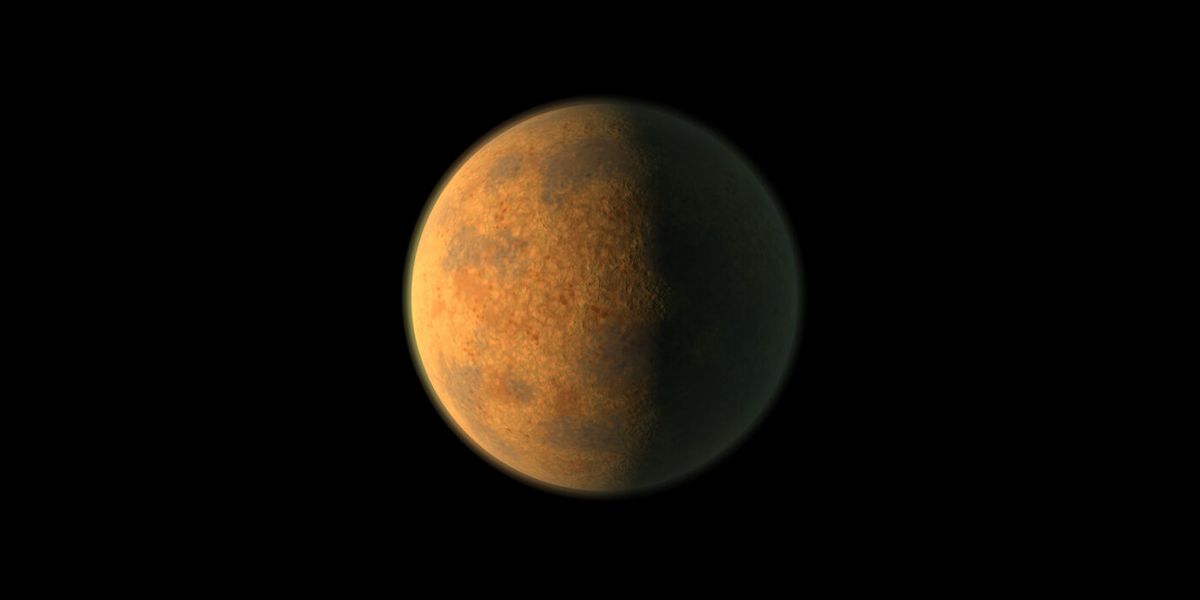
Strange, newly theorized "eggshell planets" may possess super-thin outer layers with ultra-smooth surfaces unlike those seen on any world to date, a new study reports.
Astronomers may have already detected at least three eggshell planets, scientists noted.
Over the last 25 or so years, astronomers have confirmed the existence of more than 4,500 exoplanets, worlds that orbit other stars. Many of these worlds are quite unlike any planets in the solar system. For example, so-called "hot Jupiters" are gas giants that orbit their host stars more closely than Mercury does the sun.
Related: The strangest alien planets (images)
In the new study, the researchers wanted to investigate what might be possible in terms of a planet's crackable outer layer, known as its brittle lithosphere. They modeled how different features of a rocky planet and its star might influence its brittle lithosphere's thickness.
The new models predicted that worlds that are small, old or far from their star likely have thick and rigid outer layers. However, under the right circumstances, exoplanets might possess a brittle lithosphere only a few miles thick — so-called eggshell planets.
The extremely thin brittle lithospheres of eggshell planets may not prove rigid enough to support high-standing mountains, leading to relatively smooth surfaces. In addition, their outer layers may not prove strong enough to produce the strong dense plates needed for plate tectonics, which drives continental drift and mountain-building on Earth.
"I love the idea that there are big, rocky worlds out there with surfaces that might look completely different to what we're used to because of these particular combinations of size, surface temperature and age," study lead author Paul Byrne, a planetary scientist at Washington University in St. Louis, told Space.com. "The types of possible planets out there are considerably beyond what we see in the solar system."
The absence of plate tectonics suggests that eggshell planets may not prove habitable to life as we know it. Among other things, plate tectonics helps ensure that minerals that draw carbon from their air get locked away in Earth's interior. As such, plate tectonics helps control atmospheric levels of the global warming gas carbon dioxide, which helps keep a planet from experiencing the kind of runaway greenhouse effect that has doomed Venus with a hellish climate.
"Plate tectonics helps regulate Earth's temperature, which in turn helps it retain relatively comfortable temperatures at the surface," Byrne said. "We don't know if plate tectonics is a necessity for a world to be considered habitable, but it sure helps."
The roiling of magma in the mantle layer under the surface of eggshell planets could lead to some kind of deformations. "Places where the mantle is upwelling could stretch the upper surface, and places where the mantle downwells could push parts of the crust together," Byrne said. "But the style, the appearance, of that surface deformation probably wouldn't look like tectonic plates the way we know them on Earth."
Previous astronomical surveys have detected at least three exoplanets that may be eggshell planets, Byrne said. Although scientists are a long way from directly imaging the surfaces of these eggshell planets, he noted they might resemble the lowlands on Venus, which contain vast expanses of lava but have little high-standing terrain, because the lithosphere there is thin as a result of scorching surface temperatures.
Related: 10 exoplanets that could host alien life
Related stories:
It remains uncertain what effects major disturbances might have on eggshell planets, such as giant cosmic impacts, or the kind of gravitational pull from a nearby body such as a moon that results in tides on Earth.
"Our findings suggest that anything capable of applying stress to that outer shell over long periods of time, such as tides, would not result in the kinds of structures we're familiar with on other bodies in the solar system, such as fractures — think of Europa's broken, brittle icy shell," Byrne said, referring to the potentially habitable moon of Jupiter.
"Events like impacts might generate fractures and topography, because on very short time scales even normally ductile rock will break, but over geological time our prediction is that any resultant topography would eventually disappear as the rock flows to even things out again," Byrne added. "Whether tides, or impacts, or other forces might generate sustained tectonic activity remains to be determined, but my guess is no."
Planned and future telescopes could help analyze exoplanets to see if they are eggshell worlds.
"What we've laid out here is essentially a how-to guide, or handy manual," Byrne said in a statement. "If you have a planet of a given size, at a given distance from its star and of a given mass, then with our results you can make some estimates for a variety of other features — including whether it may have plate tectonics."
The scientists detailed their findings online Oct. 20 in the Journal of Geophysical Research: Planets.
Originally published on Space.com. Follow us on Twitter @Spacedotcom or on Facebook.
"smooth" - Google News
November 29, 2021 at 06:30PM
https://ift.tt/3I5aFUv
Strange 'eggshell' exoplanets may have ultra-smooth surfaces - Space.com
"smooth" - Google News
https://ift.tt/30JhCVH
Shoes Man Tutorial
Pos News Update
Meme Update
Korean Entertainment News
Japan News Update
Bagikan Berita Ini














0 Response to "Strange 'eggshell' exoplanets may have ultra-smooth surfaces - Space.com"
Post a Comment